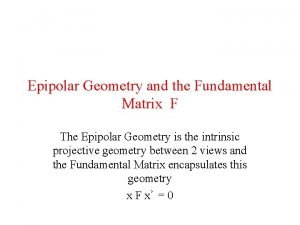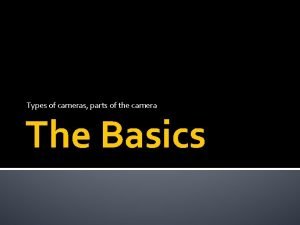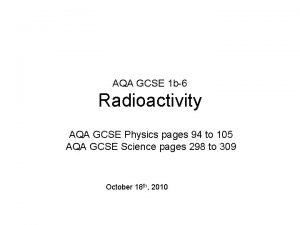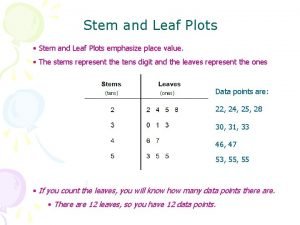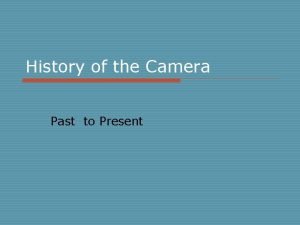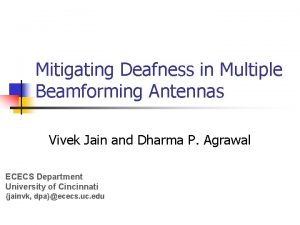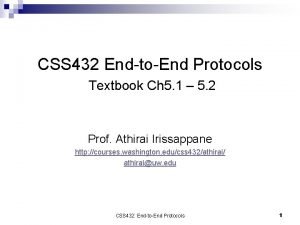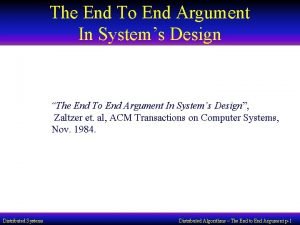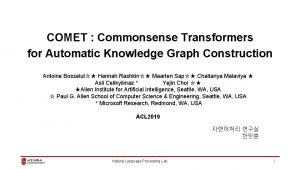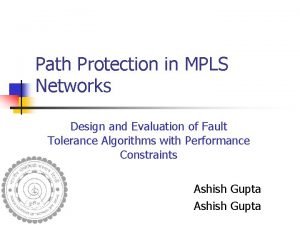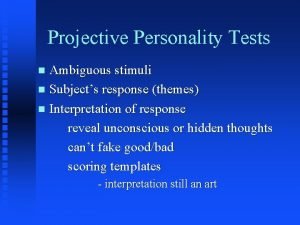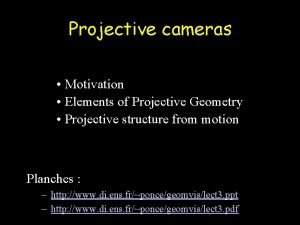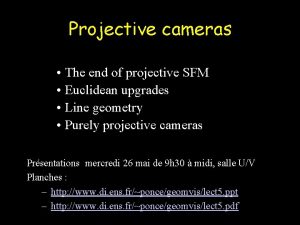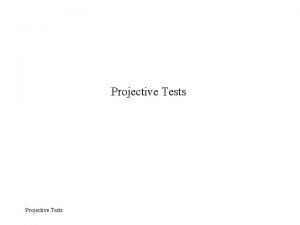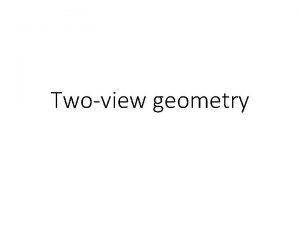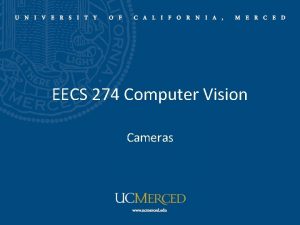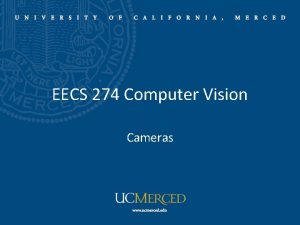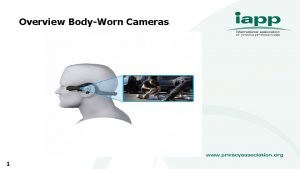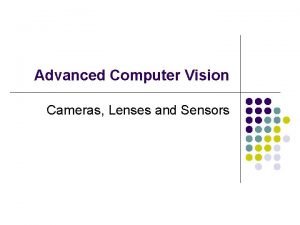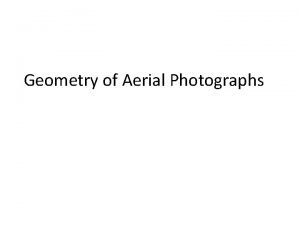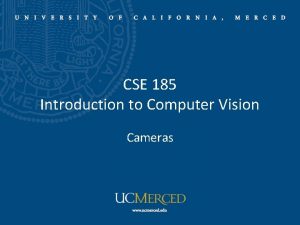The end of projective cameras Crossratios Twoview projective



























- Slides: 27

The end of projective cameras • Cross-ratios • Two-view projective SFM • Multi-view geometry • More projective SFM Planches : – http: //www. di. ens. fr/~ponce/geomvis/lect 4. pptx – http: //www. di. ens. fr/~ponce/geomvis/lect 4. pdf

Projective Spaces: (Semi-Formal) Definition

A Model of P( R 3)

Projective Subspaces and Projective Coordinates

Affine and Projective Spaces

Affine and Projective Coordinates

Affine and Projective Coordinates

Cross-Ratios Collinear points Pencil of coplanar lines {A, B; C, D}= sin( + ) sin( + + )sin Pencil of planes

Cross-Ratios and Projective Coordinates * Along a line equipped with the basis In a plane equipped with the basis In 3 -space equipped with the basis * *

Projective Transformations Bijective linear map: Projective transformation: ( = homography ) Projective transformations map projective subspaces onto projective subspaces and preserve projective coordinates. Projective transformations map lines onto lines and preserve cross-ratios.

Perspective Projections induce projective transformations between planes.

Projective Shape Two point sets S and S’ in some projective space X are projectively equivalent when there exists a projective transformation y: X X such that S’ = y ( S ). Projective structure from motion = projective shape recovery. = recovery of the corresponding motion equivalence classes.

Epipolar Geometry • Epipolar Plane • Epipoles • Epipolar Lines • Baseline

Geometric Scene Reconstruction F D K I A C J G H E O’’ B O’ Idea: use (A, B, C, D, F) as a projective basis and reconstruct O’ and O’’, assuming that the epipoles are known.

Geometric Scene Reconstruction II Idea: use (A, O”, O’, B, C) as a projective basis, assuming again that the epipoles are known.

Epipolar Geometry • Epipolar Plane • Epipoles • Epipolar Lines • Baseline

Epipolar Constraint • Potential matches for p have to lie on the corresponding epipolar line l’. • Potential matches for p’ have to lie on the corresponding epipolar line l.

Epipolar Constraint: Calibrated Case Essential Matrix (Longuet-Higgins, 1981)

Properties of the Essential Matrix • E p’ is the epipolar line associated with p’. • E T p is the epipolar line associated with p. T • E e’=0 and E e=0. • E is singular. • E has two equal non-zero singular values (Huang and Faugeras, 1989).

Epipolar Constraint: Small Motions To First-Order: Pure translation: Focus of Expansion

Epipolar Constraint: Uncalibrated Case Fundamental Matrix (Faugeras and Luong, 1992)

Properties of the Fundamental Matrix • F p’ is the epipolar line associated with p’. • F T p is the epipolar line associated with p. T • F e’=0 and F e=0. • F is singular.

The Eight-Point Algorithm (Longuet-Higgins, 1981) Minimize: under the constraint 2 |F | =1.

Non-Linear Least-Squares Approach (Luong et al. , 1993) Minimize with respect to the coefficients of F , using an appropriate rank-2 parameterization.

The Normalized Eight-Point Algorithm (Hartley, 1995) • Center the image data at the origin, and scale it so the mean squared distance between the origin and the data points is 2 pixels: q = T p , q’ = T’ p’. i i • Use the eight-point algorithm to compute F from the points q i and q’i. • Enforce the rank-2 constraint. • Output TT F T’.

Data courtesy of R. Mohr and B. Boufama.

Without normalization With normalization Mean errors: 10. 0 pixel 9. 1 pixel Mean errors: 1. 0 pixel 0. 9 pixel
 Jacobs cameras
Jacobs cameras Speed detection of moving vehicle using speed cameras ppt
Speed detection of moving vehicle using speed cameras ppt Fundamental matrix
Fundamental matrix Parts of cameras
Parts of cameras Gamma cameras bbc bitesize
Gamma cameras bbc bitesize What is a stem and leaf plot
What is a stem and leaf plot Camera past tense
Camera past tense End to end delay
End to end delay Edv and preload
Edv and preload End-to-end wireframe parsing
End-to-end wireframe parsing End to end
End to end Front end and back end in compiler design
Front end and back end in compiler design End to end argument in system design
End to end argument in system design Comet transformer
Comet transformer Difference between front end and back end of compiler
Difference between front end and back end of compiler Protect
Protect End to end accounting life cycle tasks
End to end accounting life cycle tasks End-diastolic volume vs end-systolic volume
End-diastolic volume vs end-systolic volume End-to-end procurement life cycle
End-to-end procurement life cycle Feride kröpil
Feride kröpil Tests that present ambiguous stimuli
Tests that present ambiguous stimuli Greek personality test
Greek personality test Projective monitor
Projective monitor Barnum effect
Barnum effect Exploratory research
Exploratory research Reciprocal determinism definition psychology
Reciprocal determinism definition psychology Strengths of the psychodynamic approach
Strengths of the psychodynamic approach Intuitive projective faith
Intuitive projective faith


